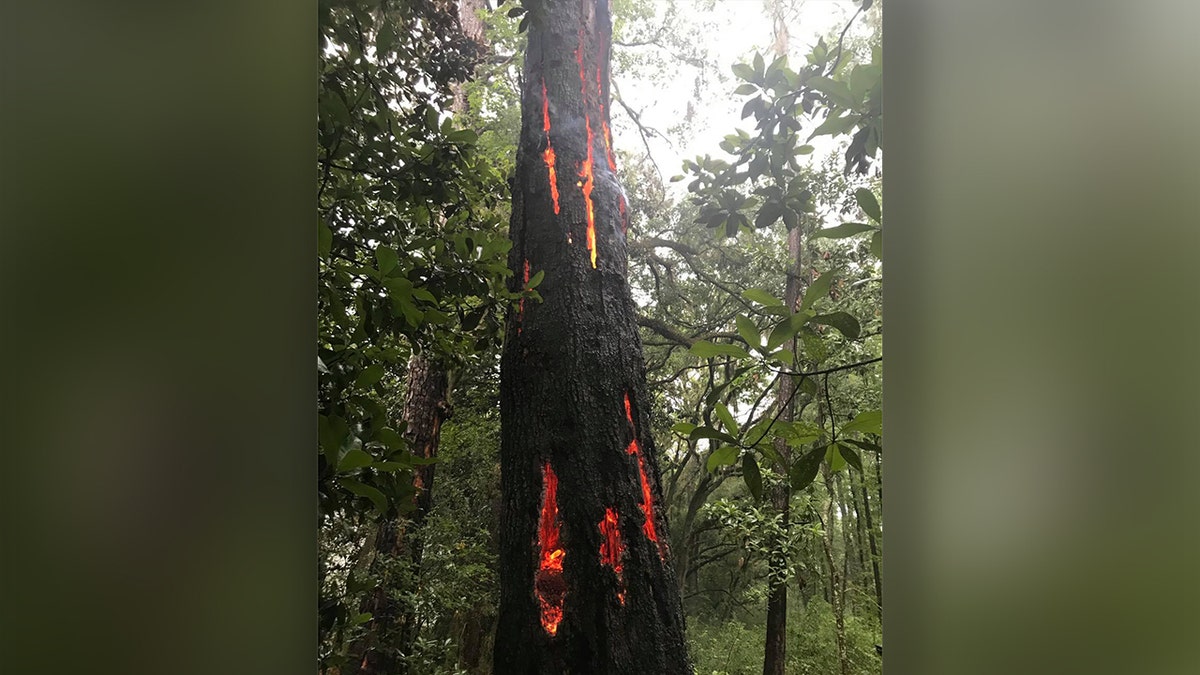What you need to know about lightning safety
Here's what the experts say to do during a lightning strike
Talk about leaving a mark.
A tree in South Carolina was left glowing with what appeared to be burning claw marks after a lightning strike on Sunday.
The City of Beaufort/Town of Port Royal Fire Department shared a photo to Facebook of the smoldering tree after the strike in the community located outside of Hilton Head.
"Check out what a lightning strike did today to a tree in the Battery Point subdivision!" the fire department wrote.

A tree in Beaufort, S.C. glows after it was struck by lightning on Sunday during a thunderstorm. (City of Beaufort/Town of Port Royal Fire Department)
Officials said that firefighters from the City of Beaufort/Town of Port Royal Fire Department quickly extinguished the tree fire.
The initial post by firefighters has drawn over 700 shares, with many commenters remarking on what the lightning strike left behind.
"Looks like red claw marks," Raphael Pizeno wrote. "It's a cover-up!"
Another person remarked the "thunder and lightning was insane."
LIGHTNING SAFETY: THESE ARE THE ACTIVITIES LINKED TO THE MOST DEATHS
"I looked outside twice, it sounded so close!" they wrote.
The incident in South Carolina was similar to one earlier this summer in Maine when flames were spotted shooting up from the middle of a tree after it was hit by lightning.
Lightning typically strikes tall objects such as trees and skyscrapers because their tops are closer to the base of the storm cloud, according to the National Severe Storms Laboratory (NSSL).
"However, this does not always mean tall objects will be struck. It all depends on where the charges accumulate," according to the agency. "Lightning can strike the ground in an open field even if the tree line is close by."
CLICK HERE FOR MORE WEATHER COVERAGE FROM FOX NEWS
When a tree is hit, water inside the tree trunk is turned into steam as energy from lightning heats the air anywhere from 18,000 degrees Fahrenheit to up to 60,000 degrees Fahrenheit, according to the NSSL.
CLICK HERE FOR THE FOX NEWS APP
"If it gets under the bark into the surface moisture of the wood, the rapidly expanding steam can blast pieces of bark from the tree, and the wood along the path is often killed," the agency states.




